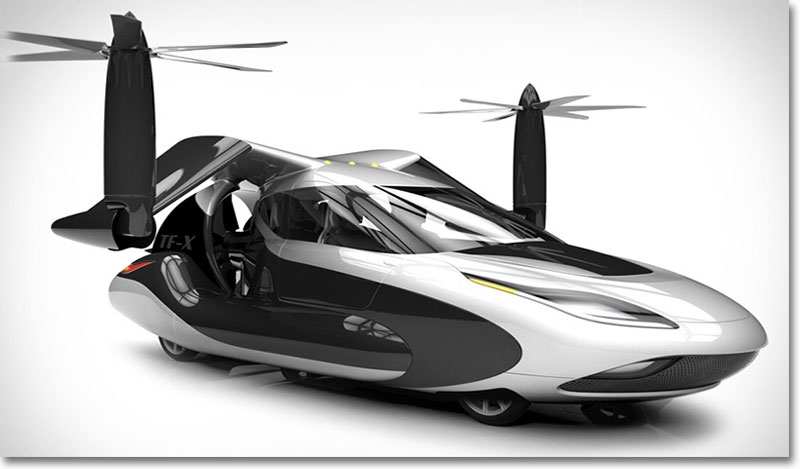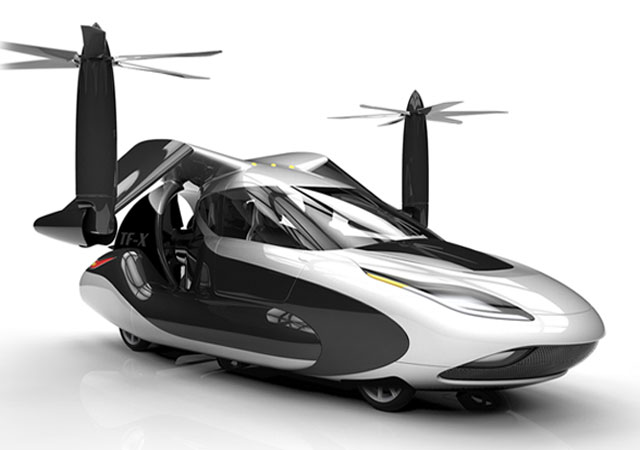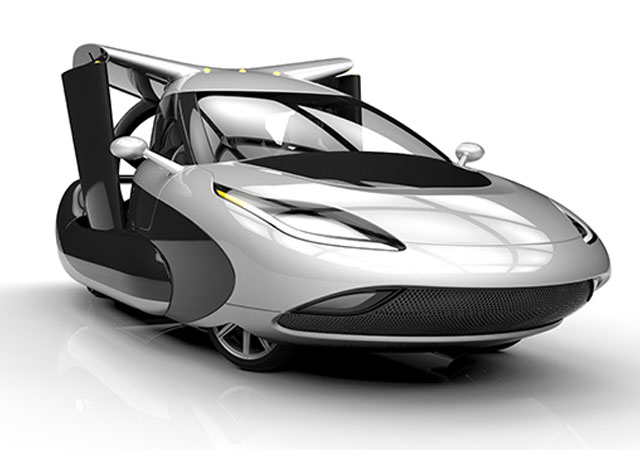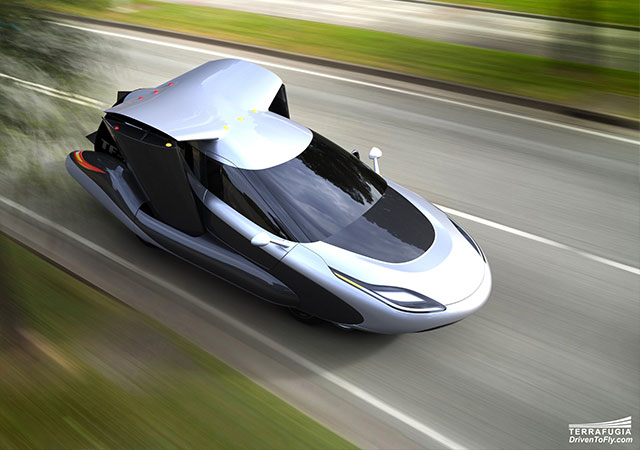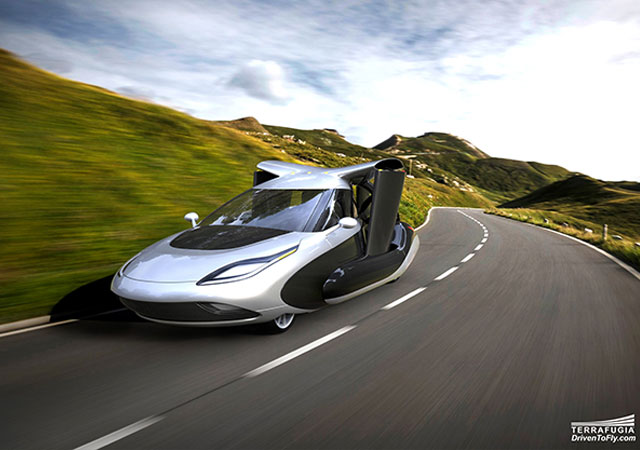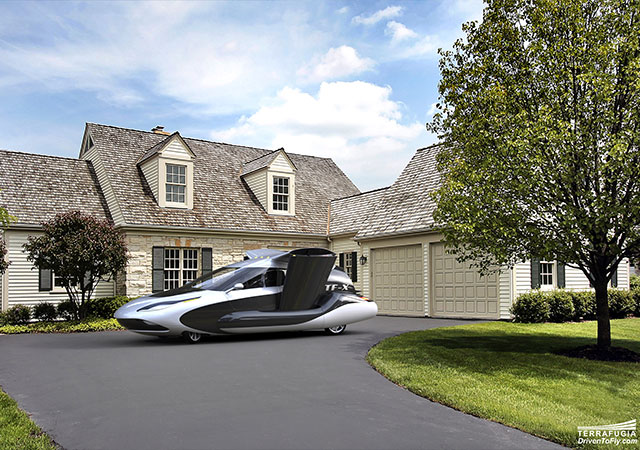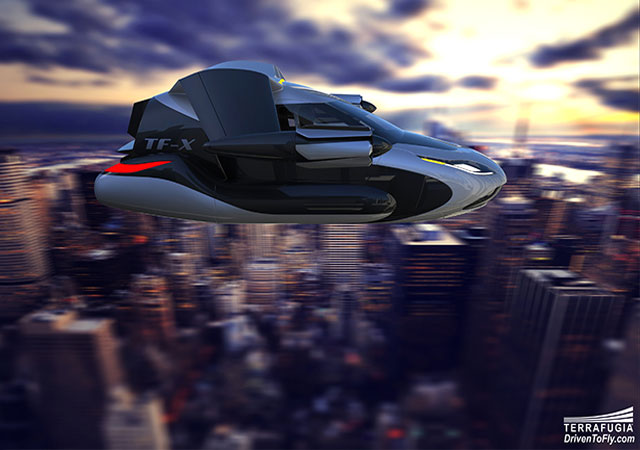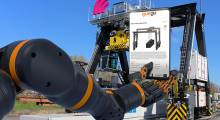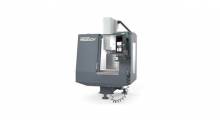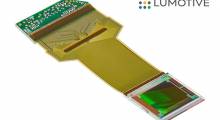Flying-car developer Terrafugia has released new designs for its planned TF-X model, developed in collaboration with Ben Schweighart and Transportation and Automotive Designer Vedran Martinek.
The TF-X is a planned autonomous flying car that was announced back in 2013.
The updated design shows a sleeker body shape, a one-tenth scale model of which will be tested in a wind tunnel at MIT.
If flying cars sound a bit far-fetched – never mind ones that fly themselves – then you should bear in mind that, not long after the TF-X was announced, Terrafugia gave the first public flight demonstration of its original flying car model, the Transition.
Whereas the Transition requires a runway to take off, however, the TF-X is able to take off and land vertically.
Terrafugia says the aim of its vehicles is to provide “true door-to-door transportation.” The TF-X is designed to seat up to four people and will have computer-controlled flight that that will allow the operator to simply input the desired destination before letting the vehicle take off (from a level clearing of at least 100 ft in diameter) and fly itself.
To enable flight, the TF-X design has fold-out wings with twin electric motor pods attached to the ends.
The motors are powered by a 300 hp engine and can move from vertical to horizontal positions as required for taking off, cruising and landing. A ducted fan will provide thrust, and the vehicle will have a cruising speed of 200 mph (322 km/h), as well as a 500 mile (805 km) flight range.
Read: 6 Reasons You Should Be Terrified About the Future of Transportation
As with taking off, the plan is for the TF-X to land autonomously, though says Terrafugia points out that the user will have the final say regarding whether it’s safe to land. Once back on the ground, the car’s wings will fold down in a matter of seconds to make it suitable for use as a road-going plug-in hybrid once again.
The one-tenth scale model will be tested at the Wright Brothers wind tunnel at the Massachusetts Institute of Technology (MIT), where the Transition was also tested.
The testing will help to measure the drag, lift and thrust forces of the new design. Simulations of hovering flight, transitioning to forward flight and full forward flight will also be carried out.
Terrafugia says the TF-X will be another 8-12 years in development.
Source: Gizmag
Related Read: AeroMobil Hopes to Launch its Flying Car in 2017

Article topics
Email Sign Up





